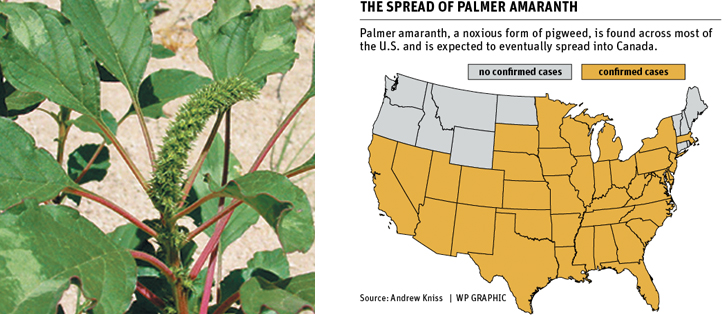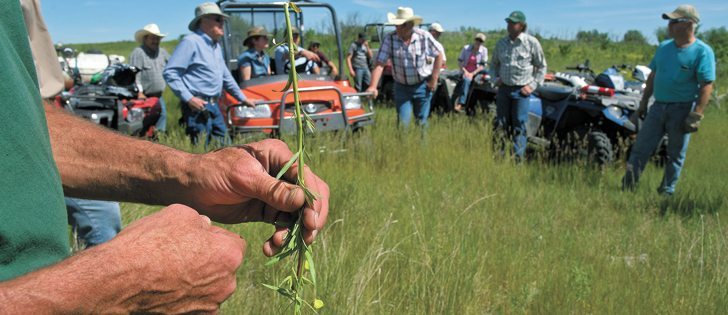Andrew Kniss has created a map that jumps off the page.
Kniss, a University of Wyoming weed scientist, tweeted out a map this winter that shows the states with palmer amaranth.
The weed has destroyed the livelihoods of farmers in Arkansas and is gaining a foothold in the U.S. Midwest.
The map shows that palmer amaranth, a pigweed, has spread to nearly every part of the United States except the northwest and extreme northeast.
Kniss said it’s inevitable that palmer will eventually arrive in Wyoming and Western Canada.
Read Also

Agri-business and farms front and centre for Alberta’s Open Farm Days
Open Farm Days continues to enjoy success in its 14th year running, as Alberta farms and agri-businesses were showcased to increase awareness on how food gets to the dinner plate.
“Given the biology and ecology of the various amaranth species, I see no reason that palmer will not move into the remaining states and provinces,” he said.
“Whether it will be a major weed like it is down in the south, I don’t know.”
Kniss produced the map because the weed has rapidly expanded its range in the last five years, moving from the southern U.S. to places like Minnesota and Michigan.
Experts say it’s spreading in a number of ways, mostly via the transport of feed and seed contaminated with palmer amaranth seeds.
University of Missouri research suggests that ducks may also play a role because they like to snack on amaranth seeds.
Plant scientists have described palmer amaranth as a “game changing” weed for farmers because it swiftly mutates to defeat herbicides.
It has demonstrated resistance to glyphosate in most states and in some locations is now resistant to multiple herbicides.
Glyphosate-resistant palmer amaranth has radically altered production practices in Arkansas, where cotton and soybean growers are spending $50 to $150 an acre on supplemental herbicides and hand weeding.
Like other experts in the northern Plains, Kniss once viewed the weed as a curiosity: something that happened in other states.
“Five or six years ago I assumed that palmer amaranth is not going to make it to Wyoming. We have such a short growing season,” he said.
“It was kind of a localized problem … but in a few years it seems liked it’s increased the speed at which it’s invading these northern states.”
Manitoba and Saskatchewan now have 2.25 million acres of corn and soybeans with more acres expected this spring, and the crops provide an opening for weeds found traditionally to the south.
Manitoba had its first detection of water hemp last fall, which is a common weed in the U.S. Midwest.
“Soybean isn’t a minor crop anymore (on the Prairies),” said Rob Gulden, a University of Manitoba weed scientist.
“We should be starting to think about some of those weed shifts that come with it.”
It may be inevitable that palmer amaranth will show up in Western Canada, but producers and agronomists can take action now to mitigate the risk.
For starters, growers need to know what it looks like, Kniss said.
If they can detect a plant or two before palmer amaranth gets out of control, the ounce of prevention is well worth the effort. Once you get it well established in a field, you’re going to be dealing with that problem for a long time.”
















